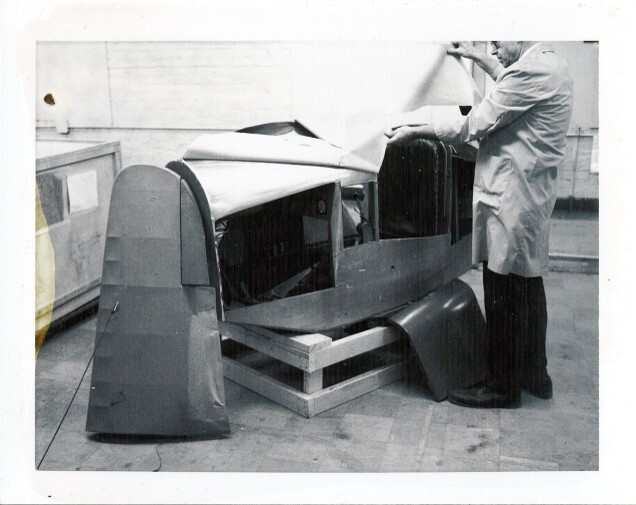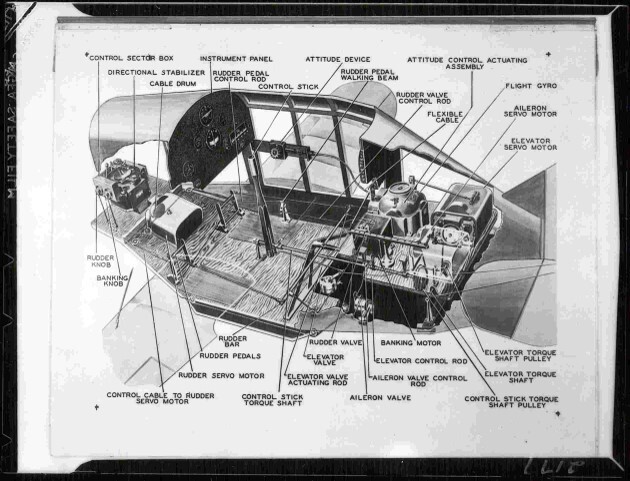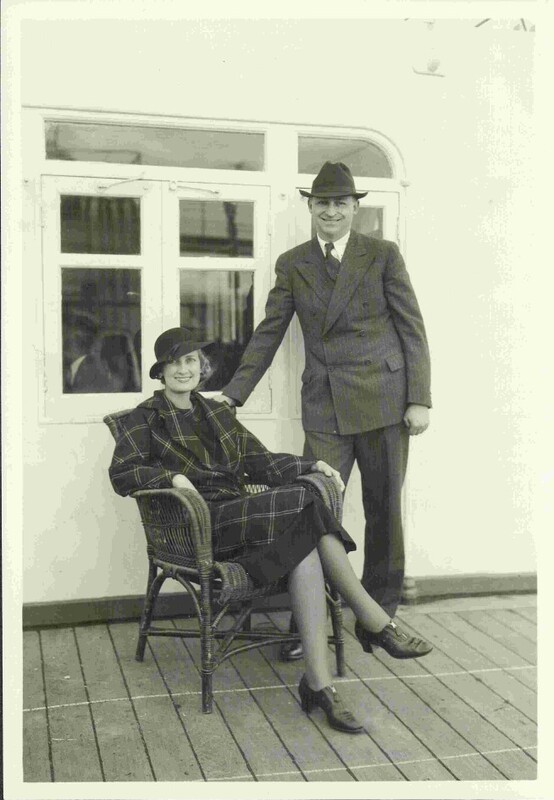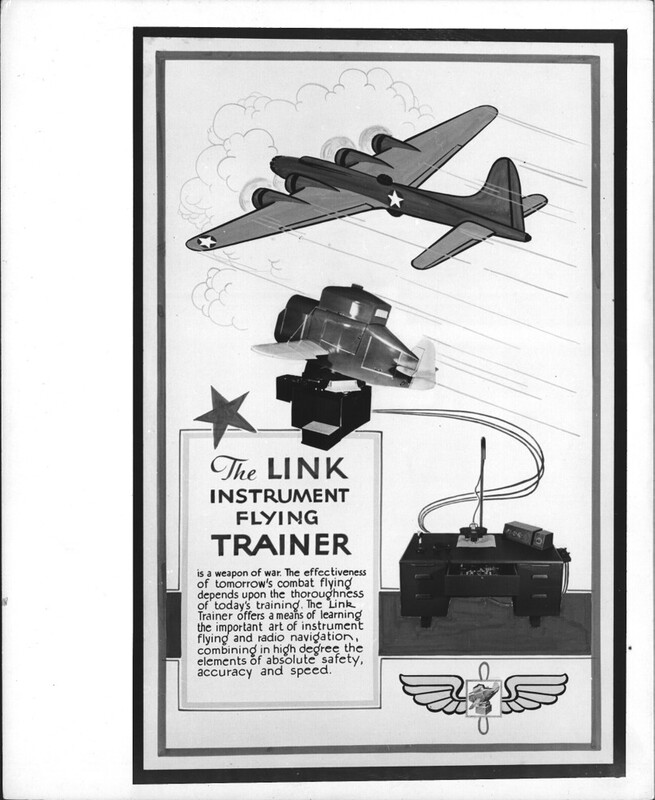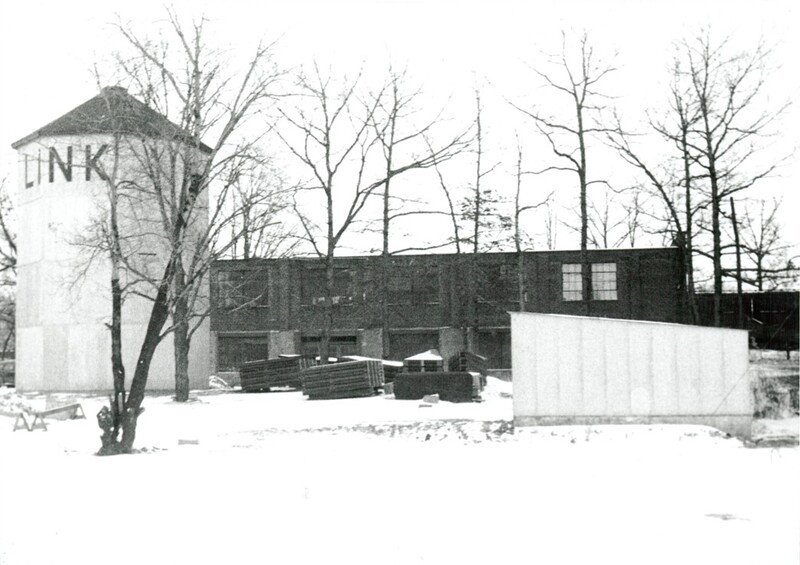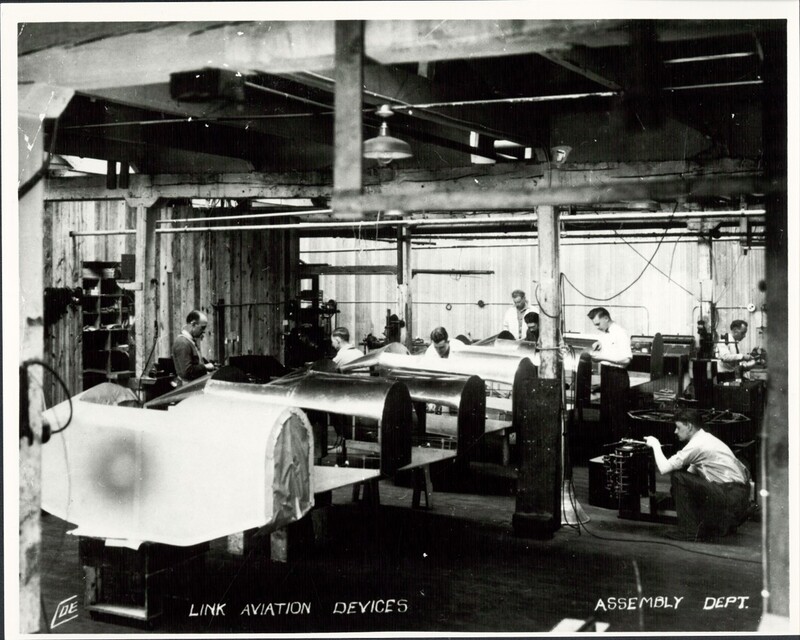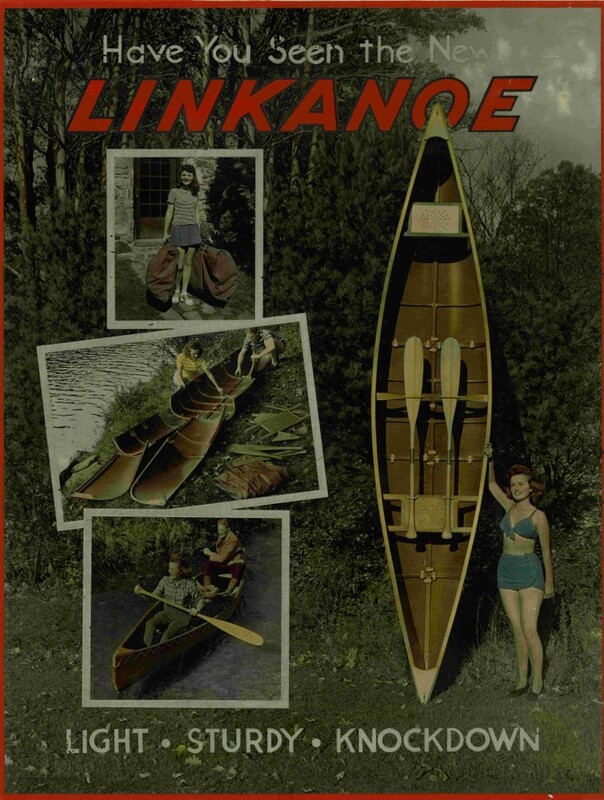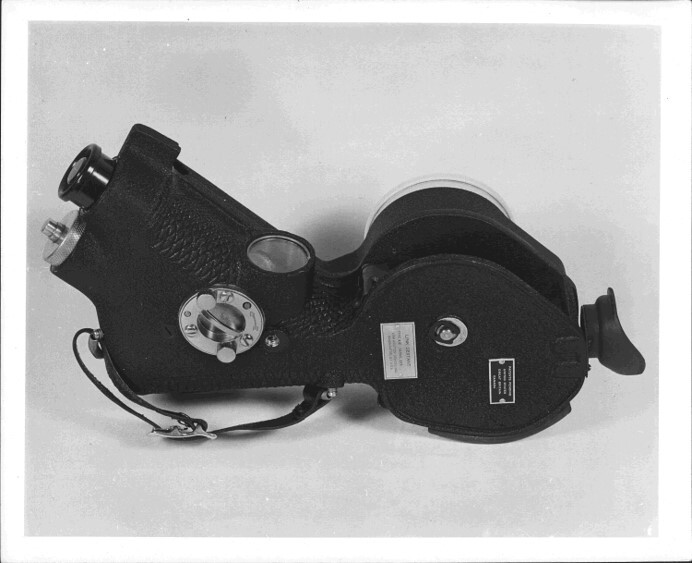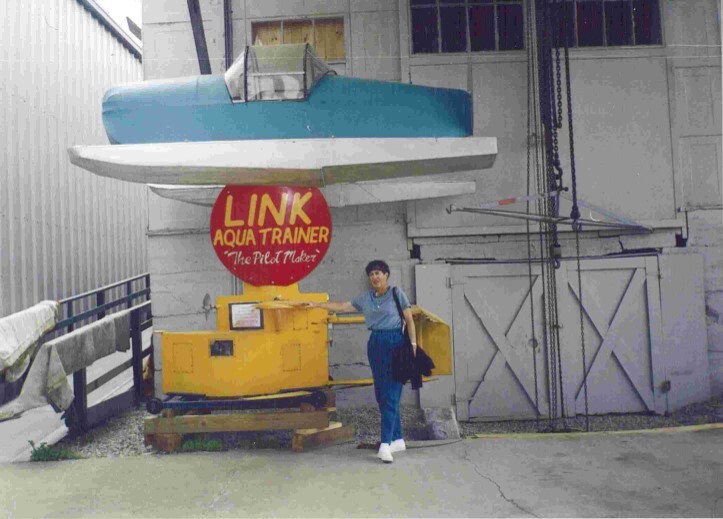Flight Simulators & Other Inventions
Jump to The Blue Box | Wartime Simulators | Inventions During the War Era
Even before the Great Depression blanketed the country, any interest in piloting and commercial flight was often tempered by the fact that lessons were both expensive and dangerous. Ed Link knew that there had to be a safer, more accessible way to teach young pilots how to fly without throwing them straight into a cockpit with no training.
His solution was the "blue box" simulator.
After nearly 18 months of tinkering, this early Link Trainer, nicknamed the "blue box" for it's outward appearance, used the organ bellows Link was so familiar with to mimic the movements of a plane. The Depression had placed the newly formed Link Aeronautical Corp. under great financial strain. Despite its intended use to train pilots, Link had difficulty selling the trainer to anyone other than amusement parks.
It wasn't until 1934 that the Trainer finally caught the attention of the U.S. Army Air Corps. Link demonstrated the power of the simulator to Air Corps representatives by safely navigating his plane in dark, rainy weather. When Link landed his plane smoothly on the tarmac, the United States military immediately placed their first order for six Link Trainers. The Soviet Union, England, and Japan would soon submit their own requests for trainers, securing the future of Link Aviation Devices.
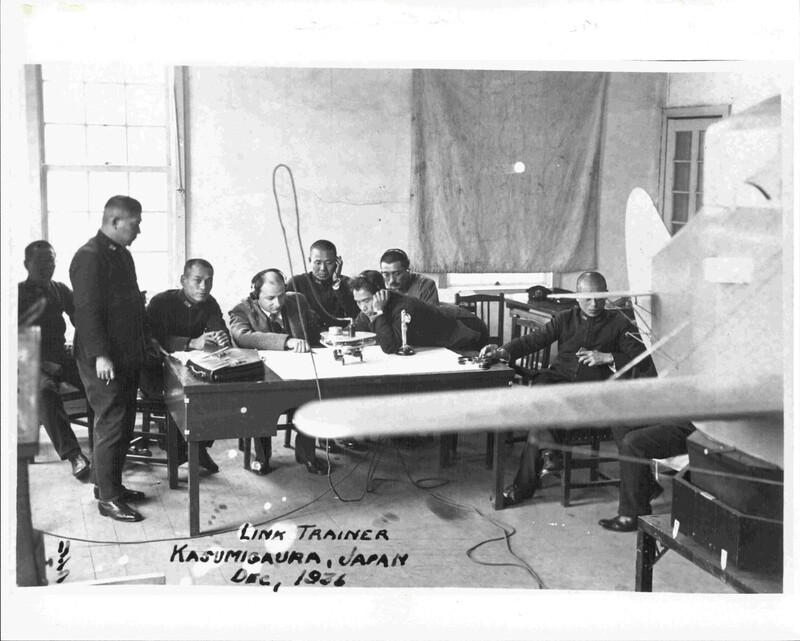 Above: The U.S. government arranged for Ed and Marion to travel to Japan in 1936 to demonstrate the Link Trainer. The photo album from their trip can be viewed in the physical exhibit at Binghamton University Libraries, which includes a note about missing photos that were taken by the U.S. Navy to investigate Japan's potential military capabilities.
Above: The U.S. government arranged for Ed and Marion to travel to Japan in 1936 to demonstrate the Link Trainer. The photo album from their trip can be viewed in the physical exhibit at Binghamton University Libraries, which includes a note about missing photos that were taken by the U.S. Navy to investigate Japan's potential military capabilities. The Link Trainer taught pilots how to navigate almost exclusively through the plane's instruments and radio. Link believed that forcing pilots to rely on their instruments would prevent accidents caused by inclement weather or sudden losses of visibility from the cockpit when they trained with real planes.
Ed Link marketed his designs in Europe and Asia throughout the 1930s. However, he was not granted an audience with U.S. military officials until a series of aviation accidents killed several Army Air Corps mail carriers in 1934. Link was then able to demonstrate his trainer as a safe and efficient alternative to jumpstart aviation training - features that would become crucially important for pilots around the world, as the end of the decade brought with it the outbreak of World War II.
The bombing of Pearl Harbor on December 7, 1941 marked the entrance of the United States into World War II. American industries increased the speed and scale of their production lines, pivoting to ammunitions, vehicle parts, and other war necessities. Link Aviation, Inc., a new company jointly owned by Ed and his brother George Link, were called to produce flight Trainers and other instruments to prepare American pilots. Over 10,000 Link Trainers had taught over 500,000 pilots to fly by the end of the war.
As the war continued, Ed Link was increasingly worried about the future of his workers and his company. Between 1944 and 1946, he filed many patents for new inventions, hoping to diversify the company's products before the war's end to lower the risk of downsizing. He expanded into new aeronautic and aquatic equipment for both military and commerical use, and created a flight training school to encourage the growth of the civilian pilot industry.
The Linkanoe was one of the primary inventions that Link hoped would ease the inevtiable financial strain on the company when the war ended, and simulators, competitive as the industry was becoming, were no longer being produced at wartime levels. The boat was sectioned, meaning it could be put together and taken apart for easier transportation. The Linkanoe was mostly successful, though it would ultimately be displaced by the emergence of lightweight aluminum canoes.
One of Link's bubble sextants is on display in the Edwin A. Link physical exhibit at the Glenn G. Bartle Library. You can see a black and white photo of the instrument out of its case below.
